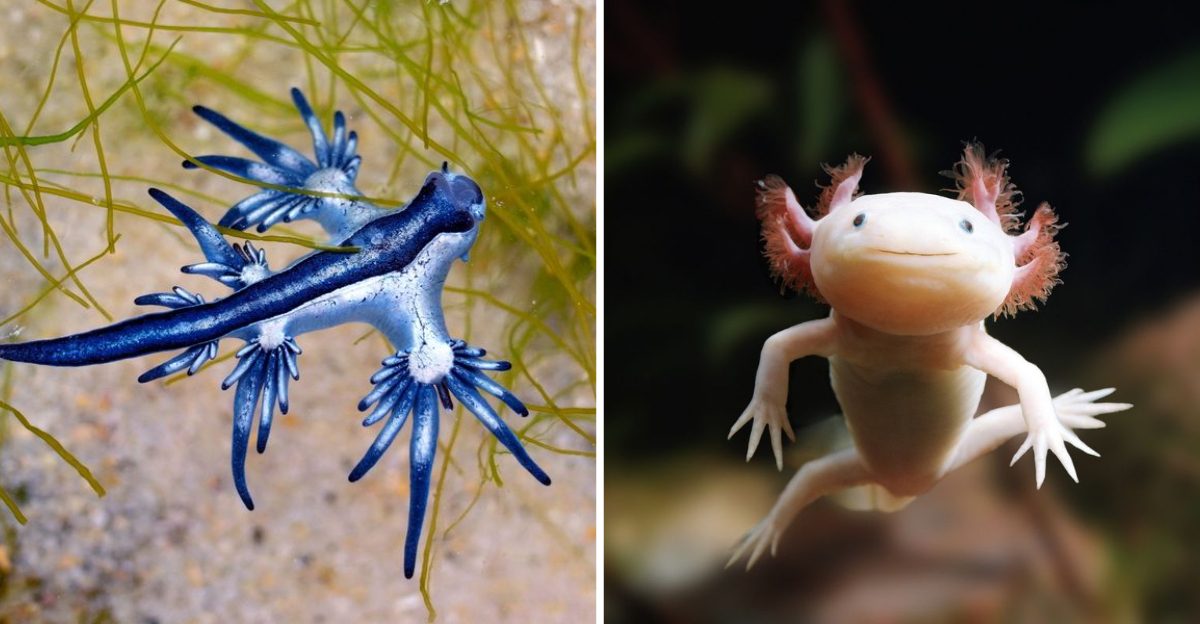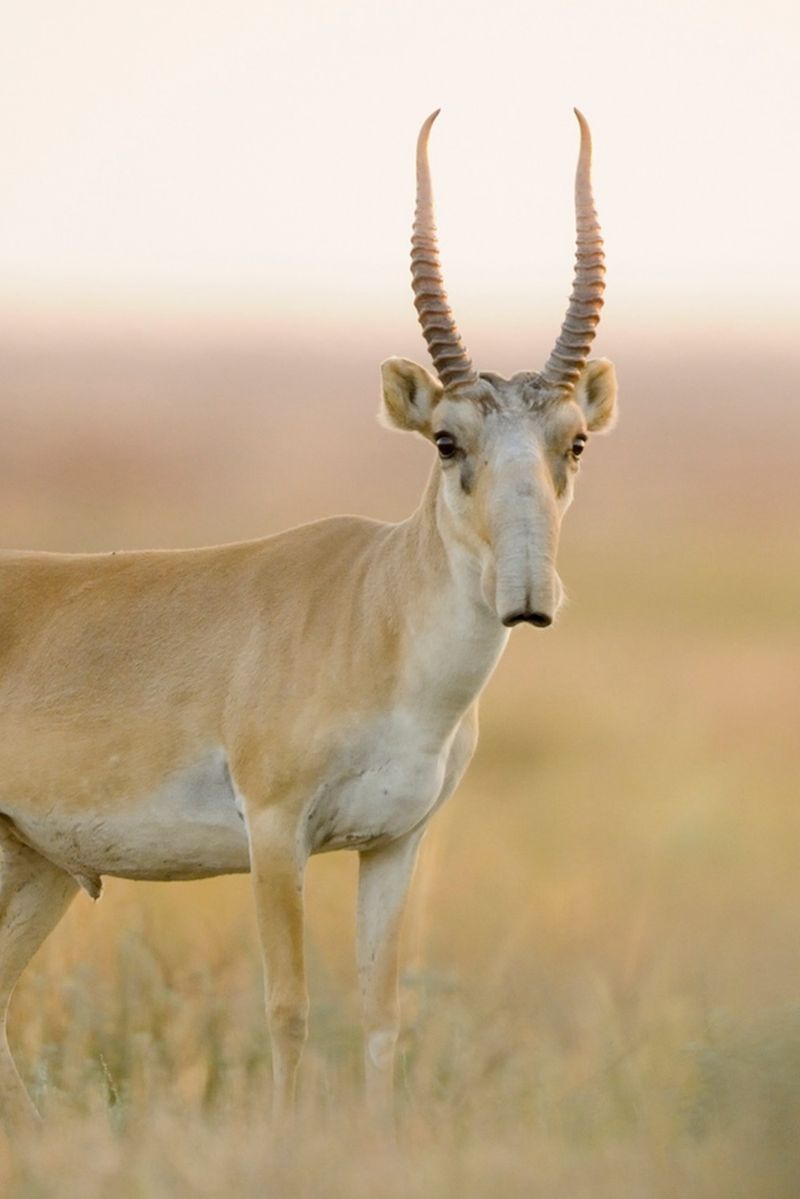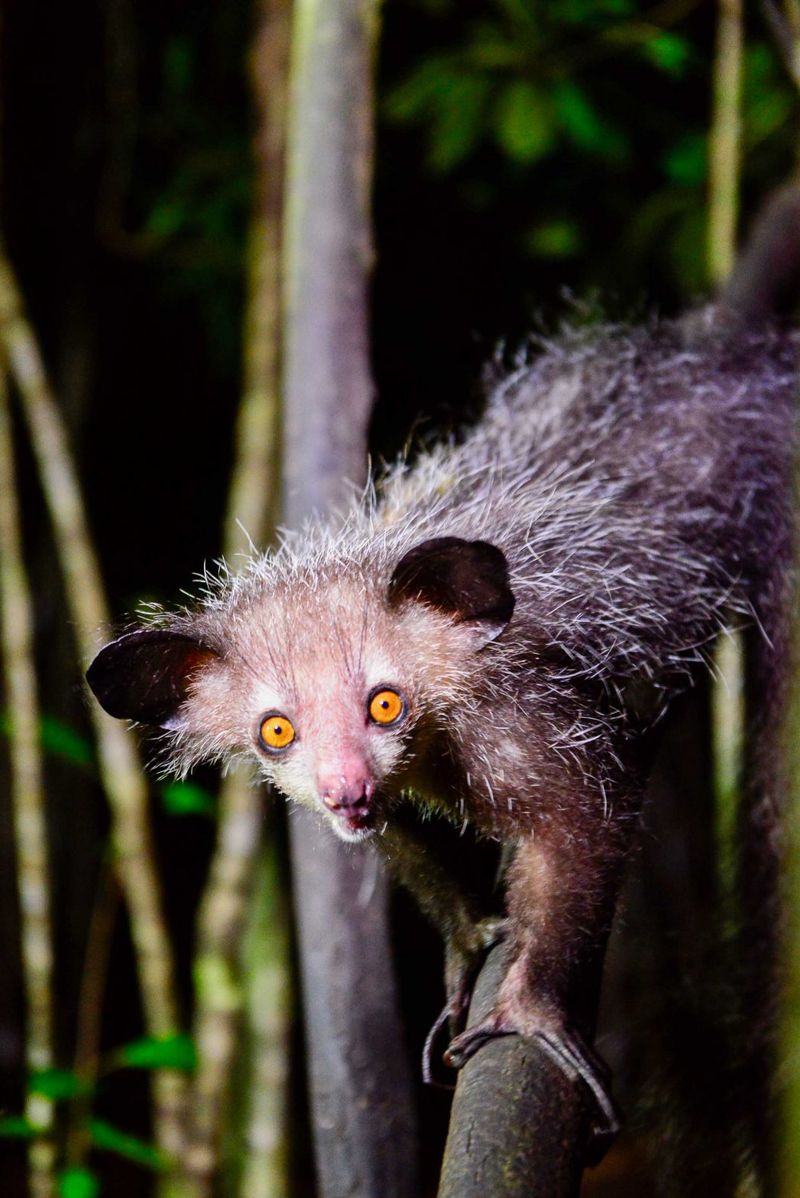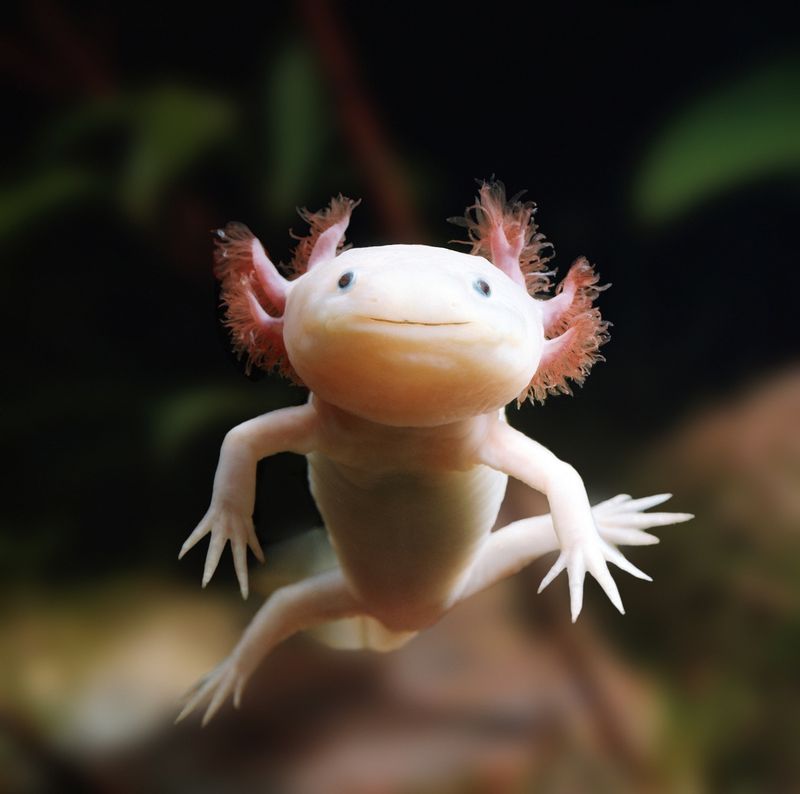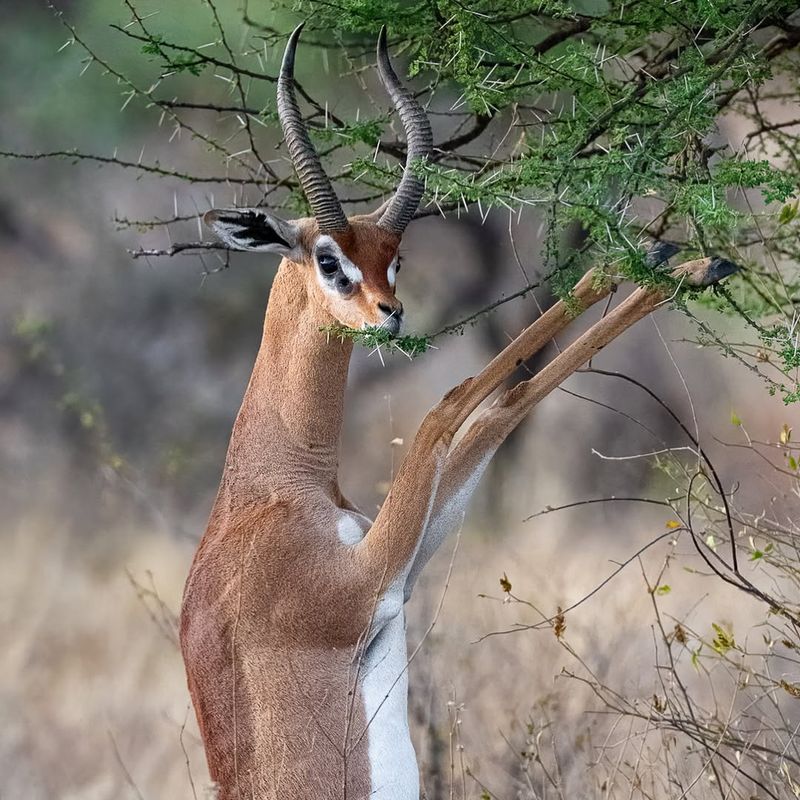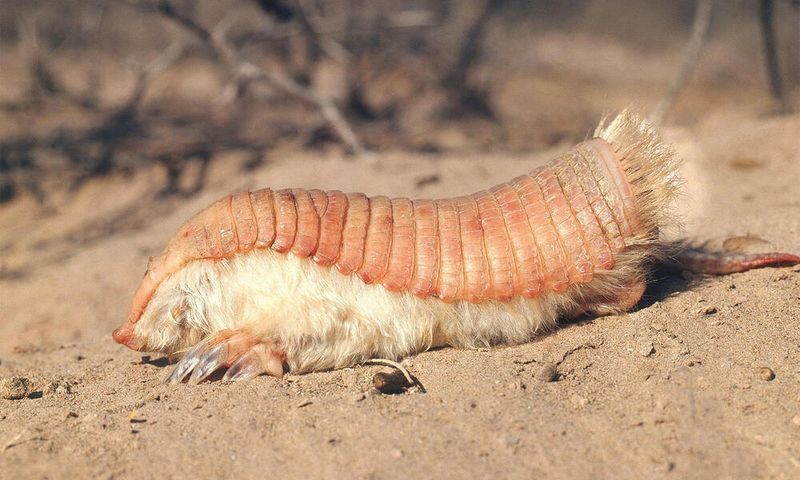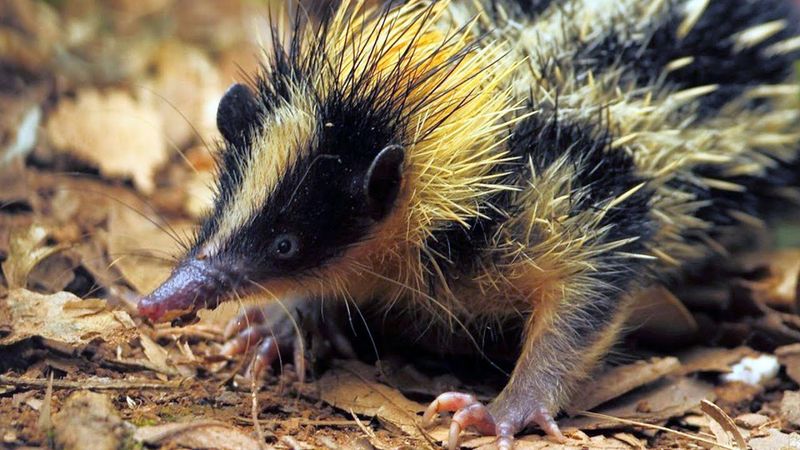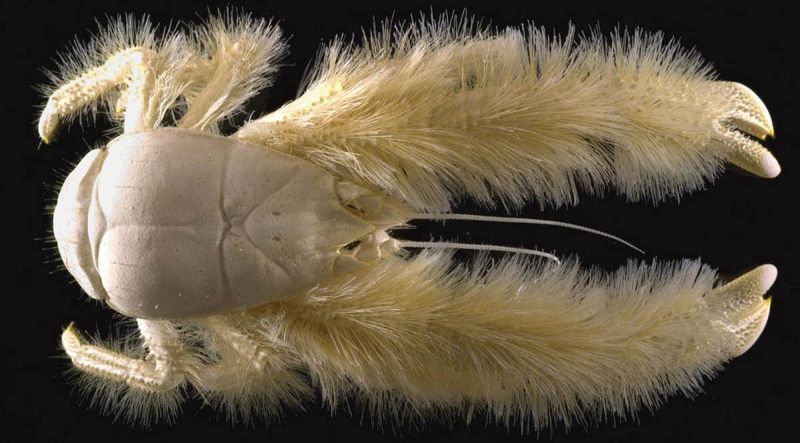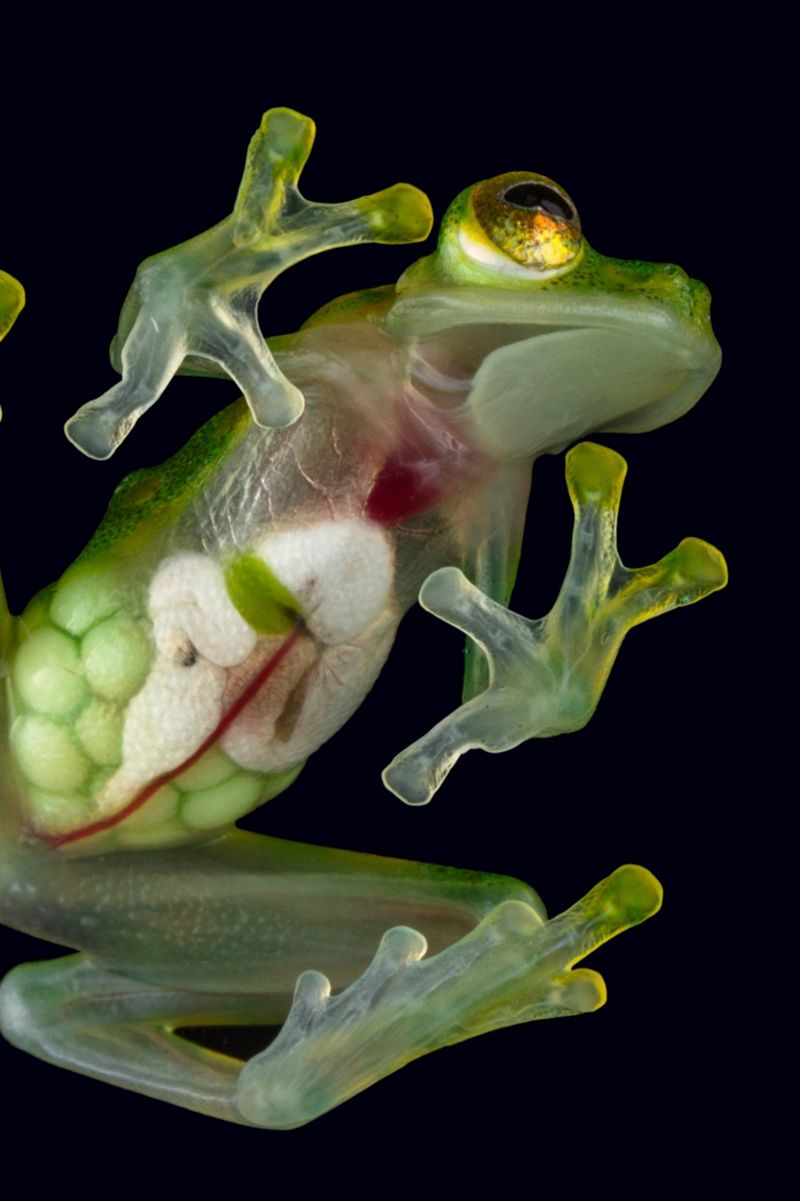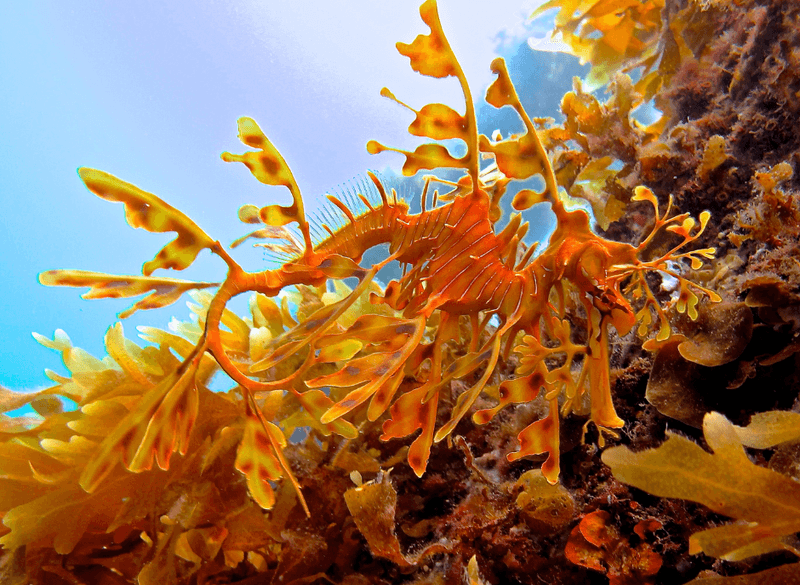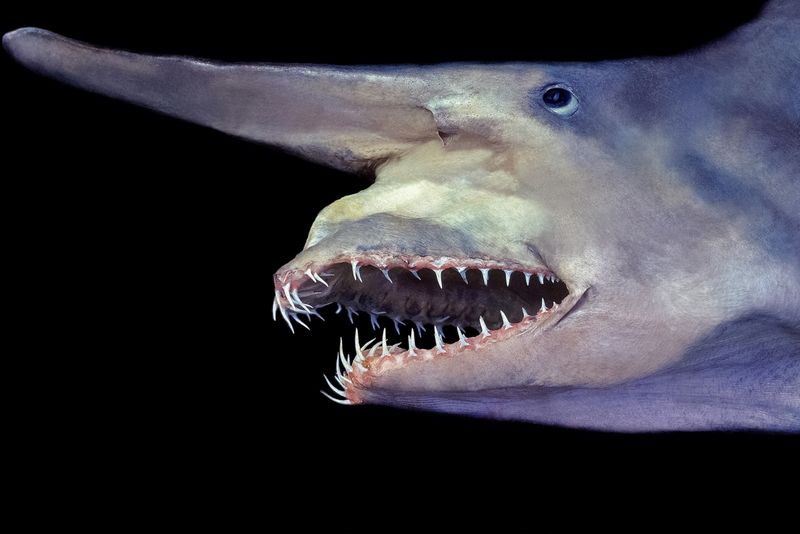The natural world is brimming with creatures so strange and unexpected, they seem to defy logic or even the imagination of science fiction writers. Here are 15 of the most unbelievable animals that actually walk, swim, or crawl across our planet:
1. Saiga Antelope
With its oversized, drooping nose, the saiga antelope seems ripped from the pages of a fantasy novel. This peculiar feature isn’t just for show; it helps filter dust during migrations across the Eurasian steppes. As you watch a herd graze, their noses bobbing with each step, it’s hard not to smile. Sadly, these antelopes face the threat of extinction, with conservationists working tirelessly to ensure their survival. Their unique appearance and critical ecological role make them a symbol of resilience and the ongoing battle to preserve our planet’s biodiversity.
2. Aye-Aye
The aye-aye, a nocturnal lemur from Madagascar, is both intriguing and eerie. With its large eyes and bushy tail, it moves through the rainforest like a phantom. But it’s the aye-aye’s elongated middle finger, tapping on trees to find hidden grubs, that truly mystifies. Superstitions have cast it as an omen, yet its role in the ecosystem is indispensable. By controlling insect populations, the aye-aye plays a critical part in maintaining forest health. This misunderstood creature’s life in the shadows is as fascinating as it is vital.
3. Dumbo Octopus
Deep in the ocean’s depths dwells the dumbo octopus, a creature as adorable as its name suggests. With ear-like fins reminiscent of Disney’s Dumbo, this octopus glides gracefully through its underwater world. Living at extreme depths, it remains a rarity, a gentle ballet dancer in the vast ocean. Its existence challenges our understanding of life in inhospitable places. As you imagine it floating serenely, the dumbo octopus invites us to ponder the mysteries beneath the waves, where beauty takes forms that defy our expectations.
4. Axolotl
The axolotl, often called the “Mexican walking fish,” captivates with its youthful charm. This amphibian retains its larval features throughout life, sporting a perpetual baby-faced look adorned with feathery gills. Imagine a creature that never quite grows up, always retaining the playful innocence of youth. Found in Mexico’s freshwater lakes, this salamander’s regenerative abilities are the stuff of legends. Lose a limb? No problem for the axolotl; it simply grows a new one. Its unique appearance and biological marvels make it a subject of both scientific study and popular fascination.
5. Gerenuk
The gerenuk, or “giraffe gazelle,” is a marvel of adaptation. With a slender neck and legs, it stands upright to reach high leaves, a unique survival tactic in East Africa’s arid landscapes. Watching a gerenuk browse is like witnessing a ballet, each movement precise and graceful. Its elongated, expressive face seems almost gentle, a contrast to the harsh environment it inhabits. This elegant antelope’s remarkable ability to thrive reminds us of nature’s ingenuity and the delicate balance that sustains life in the wild.
6. Blue Dragon (Glaucus atlanticus)
The blue dragon, or Glaucus atlanticus, is a creature of fantasy come to life. This sea slug, with its vibrant blue and silver hues, floats on the ocean surface, seemingly delicate but armed with a potent defense. It preys on venomous jellyfish, storing their toxins for its own use, a cunning strategy in the food chain. Drifting like a work of art, the blue dragon’s beauty belies its deadly nature. Its existence challenges our notions of predator and prey, revealing the intricate dance of survival in the ocean’s expanse.
7. Pink Fairy Armadillo
The pink fairy armadillo, a creature as whimsical as its name, inhabits Argentina’s sandy plains. With a pink shell that contrasts its fuzzy white body, it resembles a plush toy brought to life. As it burrows into the earth, it becomes a living testament to nature’s creativity. Despite its delicate appearance, this armadillo is a master digger, evading predators with ease. Its secretive lifestyle and enchanting looks make it a symbol of the hidden wonders that lie just beneath the surface, waiting to be discovered.
8. Lowland Streaked Tenrec
The lowland streaked tenrec, a small mammal from Madagascar, boasts an appearance as unique as its communication methods. With quills reminiscent of a porcupine, it rubs them together to produce ultrasonic sounds, a behavior known as stridulation. This ingenious form of communication adds another layer to the tenrec’s intriguing life. As it scurries through the forest, its vibrant yellow and black stripes flash like a living work of art. The tenrec’s ability to adapt and thrive in a competitive ecosystem showcases nature’s endless inventiveness.
9. Yeti Crab
The yeti crab, with its hairy, bacteria-coated claws, inhabits the extreme conditions of hydrothermal vents in the Pacific Ocean. Resembling a woolly creature from folklore, it survives in a world devoid of sunlight. Its claws are more than decorative; they cultivate bacteria that provide sustenance. In this harsh environment, the yeti crab’s resilience is nothing short of miraculous. As you picture it navigating the ocean floor, the yeti crab becomes a symbol of life’s tenacity and the unexpected beauty found in the planet’s most formidable habitats.
10. Glass Frog
The glass frog, with skin so translucent you can see its beating heart, is a wonder of the rainforest. Perched delicately on a leaf, it blends seamlessly into its surroundings, an invisible gem of nature. This frog’s unique transparency serves as a camouflage, protecting it from predators. Its ethereal beauty is matched only by its critical role in the ecosystem. As you imagine this delicate creature alive with the rhythm of life, it serves as a gentle reminder of the rainforest’s fragility and its need for protection.
11. Thorny Dragon
The thorny dragon, an Australian lizard, is an embodiment of nature’s creativity. Covered in protective spikes, it has a false head on its neck to confuse predators. In the searing desert heat, it blends with the sandy landscape, a testament to its survival skills. Its appearance is as fierce as its lifestyle; this dragon drinks by channeling water through its skin. Watching it move across the desert is like witnessing a miniature armored tank, where every spike is a story of adaptation and resilience.
12. Leafy Sea Dragon
The leafy sea dragon, a relative of the seahorse, is a master of disguise. Camouflaged among the seaweed, its leafy appendages sway with the ocean currents, rendering it almost invisible. This ability to blend in offers protection in the bustling underwater world. Beyond its visual trickery, the sea dragon’s life is one of elegance and mystery. Its gentle dance among the seaweed speaks of a world where survival depends on both beauty and cunning. Observing a leafy sea dragon is like peering into a whimsical underwater fantasy.
13. Naked Mole-Rat
The naked mole-rat defies norms with its hairless body and nearly blind eyes, thriving in the underground colonies of Africa. Living in complex social systems, these rodents are resistant to cancer and boast extraordinary longevity. As they scurry through their tunnels, their lives are a testament to cooperation and survival against the odds. This unique creature challenges our understanding of what life looks like beneath the surface, where beauty is less about appearance and more about the intricate dance of life and community.
14. Goblin Shark
The goblin shark, often called a “living fossil,” is an enigma of the deep sea. With its protruding jaws and flattened snout, it looks like something from the prehistoric era. Its haunting appearance is matched by its elusive lifestyle, gliding silently through the ocean’s abyss. This deep-sea predator’s jaws can extend dramatically, a feature that fascinates scientists and enthusiasts alike. Observing a goblin shark is like stepping back in time, witnessing a creature that has survived eons, adapting perfectly to the dark, mysterious depths.
15. Maned Wolf
The maned wolf, a striking canid of South America, stands out with its long, stilt-like legs and reddish coat. Often mistaken for a fox on stilts, its elegant stride across the savanna is a sight to behold. Unlike other wolves, it leads a solitary life, marked by its potent, musky odor. As it moves through the grasslands, the maned wolf mesmerizes with its unique appearance and enigmatic behavior. It embodies the wild spirit of its habitat, a reminder of the diverse and colorful tapestry of life in South America.
